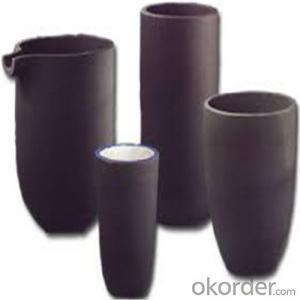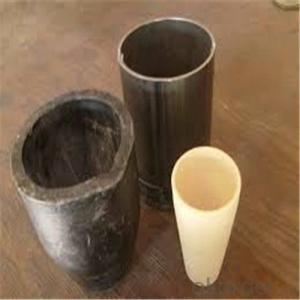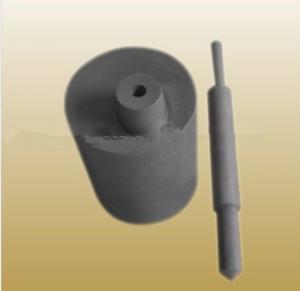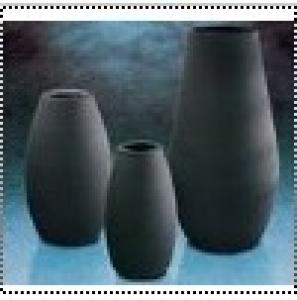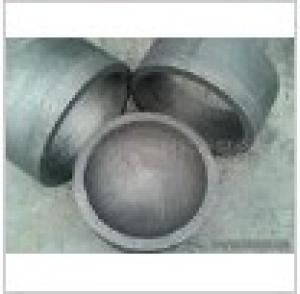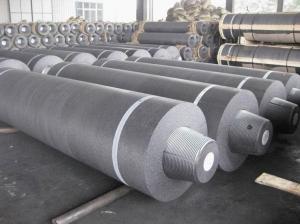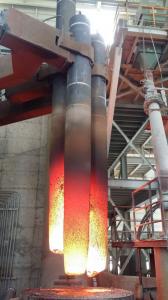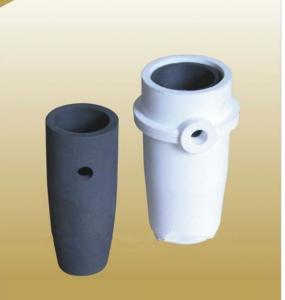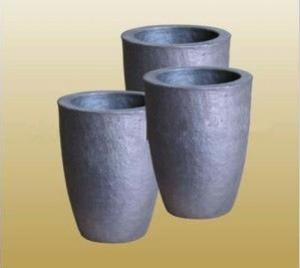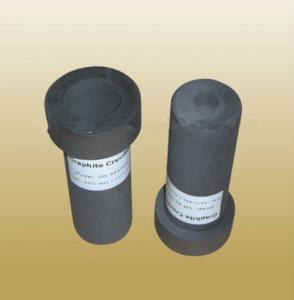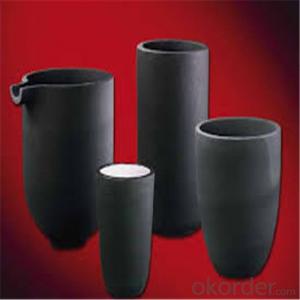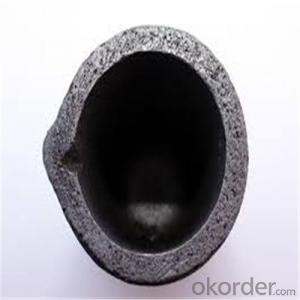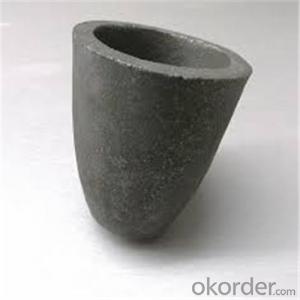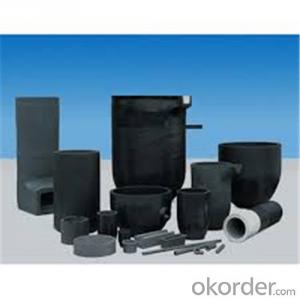SiC Crucibles For Melting Aluminium And Copper, Brass, SIC Graphite Crucible
- Loading Port:
- Shanghai
- Payment Terms:
- TT OR LC
- Min Order Qty:
- 1 pc
- Supply Capability:
- 1000 pc/month
OKorder Service Pledge
OKorder Financial Service
You Might Also Like
Quick Details for SiC Graphite Crucibles
| Type: | High Strength, graphite crucible crucible | Application: | melting metal | Height: | as your requirements |
| Composition: | High Pure | Top Diameter: | 10-600mm | Bottom Diameter: | 10-1000mm |
| Place of Origin: | China (Mainland) | Brand Name: | Model Number: | ||
| Color: | Black grey | Si3N4%: | 5min | Fe2O3%: | 0.7max |
| C%: | 30-45 | Apparent porosity: | 30max | Refractoriness: | 1680 |
| Bulk Density: | 1.71min | Using life: | >5000 hours | MAX temperature: | 1600c |
Packaging & Delivery
| Packaging Details: | Seaworty packing or as per customer's detail requirement of graphite crucible. |
| Delivery Detail: | within 20-30 days after confirm order of graphite cru |
SiC Graphite Crucibles For Melting Aluminium And Copper, Brass
Product Description
Specifications for Graphite Silicon Carbide Crucible For Aluminum Melting :
1.Long working lifetime: its working lifetime is increased 3-5 times over normal clay-crucible due to the compact body formed under high pressure.
2.High thermal conductivity: high-density body and low apparent porosity greatly improve its heat conductivity.
3.New-style materials: new heat conduction material ensures faster heat conductivity and pollution-free product, reduces adherent slag.
4.Resistance to corrosion:better anti-corrosion than normal clay-crucible.
5.Resistance to oxidation: advanced process dramatically improves its oxidation resistance, which ensures persistent heat conductivity and long working lifetime.
6.High-strength: high-density body and logical structure make the product better compression property.
7.Eco-friendly: energy-efficient and pollution-free, not only ensure metal product purity, but also ensure sustainable development on environment.
8.Multi-function: Can be used in induction graphite crucible furnace
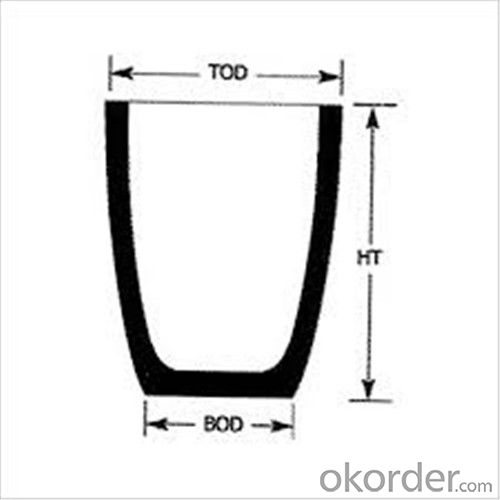

Graphite crucible can withstand the high temperature, and has good resistance to chemical erosions and thermal shock. Especially graphite crucible is ideal for the melting of aluminum, copper and etc.
Bulk Density | g/cc | 1.70-1.88 |
Specific Resistance | μΩ.m | 6.0-15.0 |
Compressive Strength | MPa | 30-80 |
Bending Strength | MPa | 20-45 |
Shore hardness | 30-70 | |
C.T.E.(100-600°C) | x10-6 /°C | 2.5-5.5 |
Ash | % | 0.01-0.2 |
Maximum Grain Size | mm | 0.044-0 |
Other Products

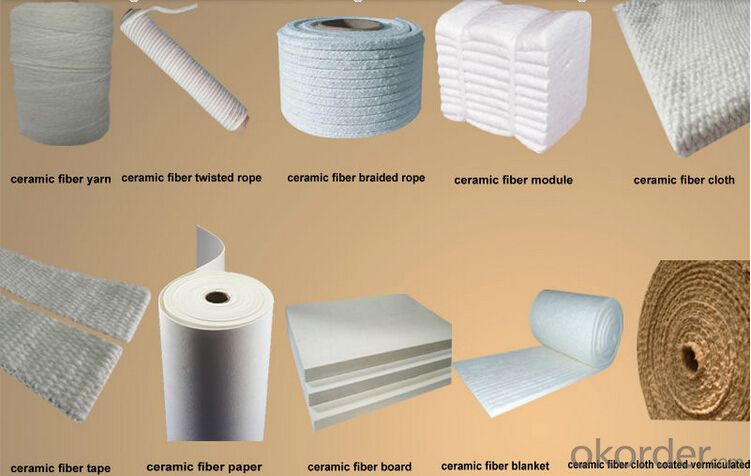
FAQ
1.What's your MOQ?
We will indicate the MOQ for each item in the quotation list. We accept the sample and trail order.
2.Can I negotiate the Prices?
Sure, we may consider discounts for bulk order of products.
3.How long will it take to complete my order?
For the stock items, we can arrange the shippment within 2~3days after received your payment. For the customized items, we will indicate the delivery time in the quotation list.
4.Can you give warranty of your products?
Yes, we extend a 100% satifisfaction guarantee on all items. Please feel free to provide timely feedback if you're not satisfied with N&D's Quality and Service. For the overseas orders, if there is a quality problem, please kindly to provide the picturers to show the problem by e-mail. We will provide the replacements to you at our cost according to actual conditions.
5.Can I visit you?
Sure. If you're a volume buyer and would like to visit our in-house products and production line, please contact us to make an appointment.
- Q:Is it possible to achieve a controlled atmosphere inside a graphite crucible?
- Yes, it is possible to achieve a controlled atmosphere inside a graphite crucible. Graphite crucibles are commonly used in high-temperature applications such as melting metals and alloys. In order to achieve a controlled atmosphere, various methods can be employed. One method is to use a gas purging system. This involves introducing a specific gas into the crucible to create the desired atmosphere. For example, if an inert atmosphere is required, gases like argon or nitrogen can be used to displace any oxygen or other reactive gases present. The flow rate and pressure of the gas can be controlled to maintain the desired atmosphere. Another method is to create a sealed environment around the crucible. This can be achieved by using a furnace or an induction heating system with a gas-tight enclosure. By controlling the gas composition and pressure within this enclosure, a specific atmosphere can be maintained around the crucible. Additionally, it is important to consider the crucible material itself. Graphite is known for its high thermal conductivity, which means it can transfer heat quickly. However, it can also be reactive with certain gases or metals at high temperatures. Therefore, selecting the appropriate grade of graphite and ensuring proper crucible conditioning can help maintain a controlled atmosphere. Overall, with the right equipment and techniques, it is possible to achieve a controlled atmosphere inside a graphite crucible, allowing for precise control of the environment during high-temperature processes.
- Q:Can graphite crucibles be used for melting composite materials?
- Yes, graphite crucibles can be used for melting composite materials. Graphite crucibles have excellent thermal conductivity and high melting point, making them suitable for melting a wide range of materials including composites. However, it is important to consider the specific requirements of the composite material being melted to ensure compatibility and avoid any potential reactions or contamination.
- Q:Intermediate frequency induction furnace melting copper with what dry pot?
- Select the appropriate size of the crucible, the size placed in the middle of the furnace ring, the gap has one point, just fine, and then wrapped inside the coil insulation cloth
- Q:What is the use of an iron crucible?
- Because it is more able to withstand high temperatures than glass. When used, the crucible is usually placed diagonally on the crucible to prevent the heat from jumping out and allowing the air to pass in and out freely for possible oxidation. Because the bottom of the pot is very small, it usually needs to be placed on the clay triangle to heat it directly. The crucible can be placed on the iron tripod with either positive or oblique directions, and can be placed on the basis of the requirements of the experiment. When the crucible is heated, it cannot be immediately placed on a cold metal table to prevent it from breaking due to rapid cooling.
- Q:Can graphite crucibles be used for plasma arc melting?
- Yes, graphite crucibles can be used for plasma arc melting. Graphite has excellent heat resistance and electrical conductivity properties, making it suitable for containing and melting materials under high temperatures generated by plasma arcs.
- Q:Why graphite and diamond is composed of carbon graphite, but not light, is black, and the diamond is urgently in light!
- Simply speaking, the structure is different, so the nature of the expression is different
- Q:How does a graphite crucible handle chemical resistance?
- The inherent properties of graphite make a graphite crucible highly resistant to chemical corrosion. Graphite consists of carbon atoms arranged in a hexagonal lattice structure, which provides exceptional chemical stability. It does not react with acids, bases, or organic solvents, making it non-reactive with most chemicals. The chemical resistance of a graphite crucible is mainly due to its high melting point and low reactivity. With a melting point of over 3,500 degrees Celsius, graphite can withstand extreme temperatures and resist chemical degradation. This makes it suitable for various high-temperature processes, such as melting metals and alloys. Additionally, graphite's non-porous structure prevents chemicals from permeating its surface. This non-porosity minimizes the risk of chemical absorption, ensuring that the crucible remains chemically inert and resistant to corrosion. Hence, it can be used with reactive substances without fear of contamination or chemical reactions. However, it is important to note that despite its resistance to most chemicals, graphite crucibles may still be vulnerable to certain aggressive substances under specific conditions. For example, graphite can react with strong oxidizing agents like fluorine gas or molten alkali metals. Prolonged exposure to corrosive environments or extreme temperatures can also gradually degrade the crucible's resistance. In conclusion, a graphite crucible demonstrates excellent chemical resistance due to its high melting point, non-reactive nature, and non-porous structure. It can effectively withstand the corrosive effects of most chemicals encountered in various industrial processes, making it a reliable choice for applications requiring chemical stability. However, it is essential to consider the specific chemical environment and conditions to ensure optimal performance and longevity of the crucible.
- Q:What are the differences between quartz crucibles and glass crucibles in appearance, properties, uses, etc.?
- In fact, it is not scientific to store sodium hydroxide in quartz bottles or glass bottles. Sodium hydroxide will react with silica, a major component of quartz and glass, to produce sodium silicate with sticky and reactive properties
- Q:Are graphite crucibles suitable for use in microwave heating?
- No, graphite crucibles are not suitable for use in microwave heating.
- Q:Can graphite crucibles be used for melting pharmaceutical compounds?
- Yes, graphite crucibles can be used for melting pharmaceutical compounds. Graphite is a commonly used material in high-temperature applications, and its high thermal conductivity and resistance to chemical reactions make it suitable for melting various substances, including pharmaceutical compounds.
1. Manufacturer Overview |
|
|---|---|
| Location | |
| Year Established | |
| Annual Output Value | |
| Main Markets | |
| Company Certifications | |
2. Manufacturer Certificates |
|
|---|---|
| a) Certification Name | |
| Range | |
| Reference | |
| Validity Period | |
3. Manufacturer Capability |
|
|---|---|
| a)Trade Capacity | |
| Nearest Port | |
| Export Percentage | |
| No.of Employees in Trade Department | |
| Language Spoken: | |
| b)Factory Information | |
| Factory Size: | |
| No. of Production Lines | |
| Contract Manufacturing | |
| Product Price Range | |
Send your message to us
SiC Crucibles For Melting Aluminium And Copper, Brass, SIC Graphite Crucible
- Loading Port:
- Shanghai
- Payment Terms:
- TT OR LC
- Min Order Qty:
- 1 pc
- Supply Capability:
- 1000 pc/month
OKorder Service Pledge
OKorder Financial Service
Similar products
New products
Hot products
Hot Searches
Related keywords
